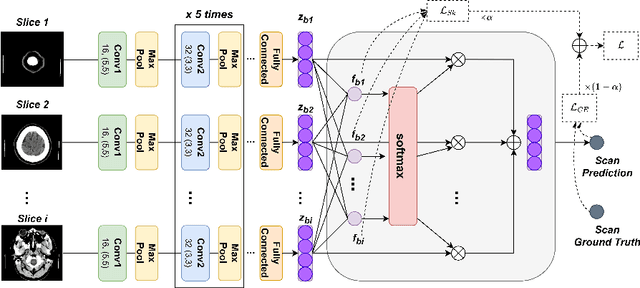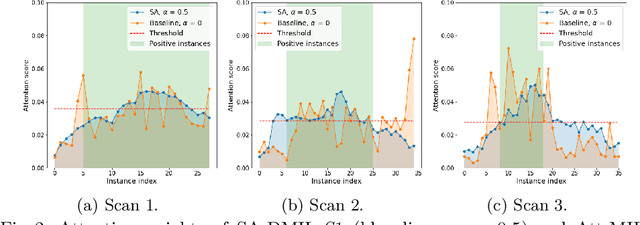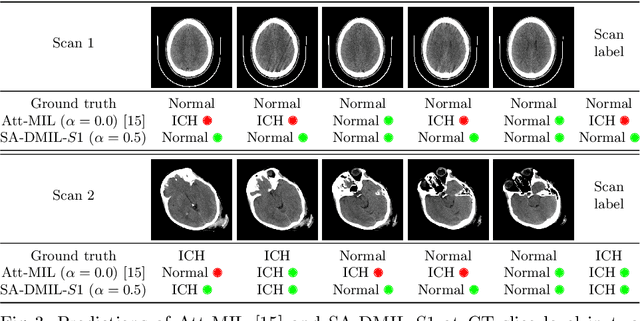Francisco M. Castro-Macías
Sm: enhanced localization in Multiple Instance Learning for medical imaging classification
Oct 04, 2024Abstract:Multiple Instance Learning (MIL) is widely used in medical imaging classification to reduce the labeling effort. While only bag labels are available for training, one typically seeks predictions at both bag and instance levels (classification and localization tasks, respectively). Early MIL methods treated the instances in a bag independently. Recent methods account for global and local dependencies among instances. Although they have yielded excellent results in classification, their performance in terms of localization is comparatively limited. We argue that these models have been designed to target the classification task, while implications at the instance level have not been deeply investigated. Motivated by a simple observation -- that neighboring instances are likely to have the same label -- we propose a novel, principled, and flexible mechanism to model local dependencies. It can be used alone or combined with any mechanism to model global dependencies (e.g., transformers). A thorough empirical validation shows that our module leads to state-of-the-art performance in localization while being competitive or superior in classification. Our code is at https://github.com/Franblueee/SmMIL.
Smooth Attention for Deep Multiple Instance Learning: Application to CT Intracranial Hemorrhage Detection
Jul 18, 2023



Abstract:Multiple Instance Learning (MIL) has been widely applied to medical imaging diagnosis, where bag labels are known and instance labels inside bags are unknown. Traditional MIL assumes that instances in each bag are independent samples from a given distribution. However, instances are often spatially or sequentially ordered, and one would expect similar diagnostic importance for neighboring instances. To address this, in this study, we propose a smooth attention deep MIL (SA-DMIL) model. Smoothness is achieved by the introduction of first and second order constraints on the latent function encoding the attention paid to each instance in a bag. The method is applied to the detection of intracranial hemorrhage (ICH) on head CT scans. The results show that this novel SA-DMIL: (a) achieves better performance than the non-smooth attention MIL at both scan (bag) and slice (instance) levels; (b) learns spatial dependencies between slices; and (c) outperforms current state-of-the-art MIL methods on the same ICH test set.
 Add to Chrome
Add to Chrome Add to Firefox
Add to Firefox Add to Edge
Add to Edge